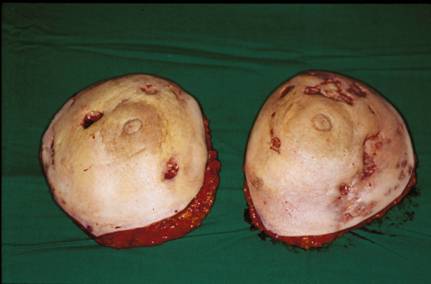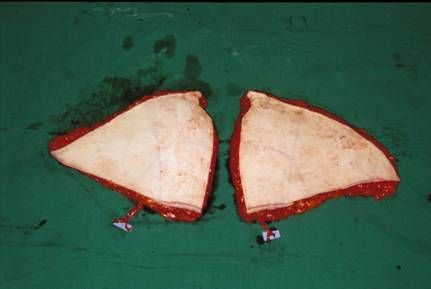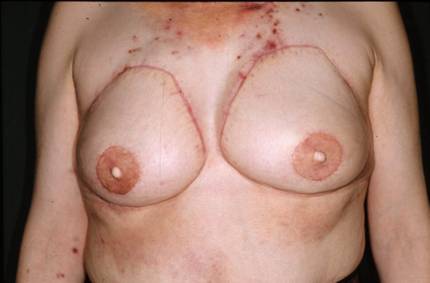Sunday, October 10, 2004
6240
Bilateral Breasts Paraffinoma and Its Treatment
Purpose: The purpose of this study is to introduce our experience of treating patients who developed complications after injection of large amounts of paraffin into the breasts for augmentation, and to propose a classification according to the degree of the complication.
Material and Methods: From
Results: 9 patients showed Grade I disease and were treated with medication including steroids and anti-inflammatory drugs. 5 patients underwent surgical resection of the indurated masses or subcutaneous mastectomy according to Grade II. 4 patients with Grade III underwent modified radical mastectomy. One of these patients had ductal cell carcinoma in the specimen. The time period of symptom development after paraffin injection reached from 3 years to 15 years with a great individual variation.
Conclusion: Our classification can be applied to any foreign body reaction in the tissue (including paraffin or silicone, etc). Particularly paraffin developed severe, irreversible complications in the breasts with time. We believe that a strategic management based on the classification is necessary for the breast preservation.
Fig.1.(Upper, Left) Grade III paraffinoma complication shows hard induration, ulceration and necrosis of skin. Multiple rashes on the chest are also noted.
Fig. 2.(Upper, Right) The whole lesion of hard breast was resected.
Fig. 3. (Lower, Left) Bilateral free TRAM flaps were harvested for the immediate reconstruction of breasts.
Fig. 4. (Lower, Left) Postoperative view of bilateral breast reconstruction with TRAM flaps.
View Synopsis (.doc format, 77.0 kb)




